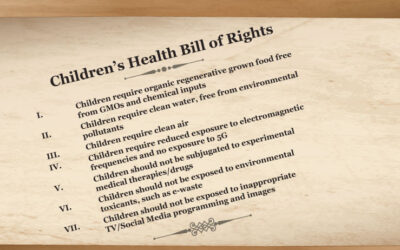Findings question industry and regulatory position of “substantial equivalence” of GM crops and may have safety implications
At-a-glance
- In-depth molecular analysis of a genetically modified (GMO) Roundup-tolerant corn variety, NK603, revealed major compositional differences between NK603 and its closest non-GMO relative.
- Results showed disturbances in energy utilization and oxidative stress (damage to cells and tissues by reactive oxygen) in the GMO corn, as well as large increases in certain polyamines, substances that perform essential functions in living cells.
- Polyamines found in increased amounts in GMO NK603 corn include putrescine and cadaverine, which can produce toxic effects. For example, they enhance the effects of histamine, thus potentially heightening allergic reactions, and play a role in forming carcinogenic substances called nitrosamines.
- The findings disprove industry and regulatory agency claims that NK603 is “substantially equivalent” to its non-GMO counterpart.
- The question arises as to whether the increased levels of putrescine and cadaverine could account for signs of potential negative health effects in rats fed NK603 corn.
- This question needs to be further analyzed in long-term feeding studies on laboratory animals.
- In related studies, several metabolites were altered in the tissues of rats fed the GMO corn, indicating organ damage, as compared with control animals fed non-GMO corn.
- In addition, rats fed a very low dose of the Roundup herbicide that NK603 corn is grown with (below regulatory permitted levels) suffered from non-alcoholic fatty liver disease (NAFLD), a condition that affects 1 in 4 Americans. The study is the first to show a causative link between consumption of Roundup at a real-world environmental dose and a serious disease.
- There were signs that levels of the antioxidant glutathione in Roundup-exposed rats were depleted, which may have clinical significance. For example, people with autism typically have reduced glutathione levels.
- Until the risks to human health are clarified, Roundup should be removed from agricultural practice.
Page 1 of a 3-page article
A peer-reviewed study (Mesnage et al, 2016) led by Dr. Michael Antoniou at King’s College London describes the effects of the process of genetic engineering on the composition of a genetically modified (GMO) Roundup-tolerant corn variety, NK603. In-depth analysis of types of proteins (“proteomics”) and small biochemical molecules (“metabolomics”) revealed major compositional differences between NK603 and its non-GMO parent. The results show not only disturbances in energy utilization and oxidative stress (damage to cells and tissues by reactive oxygen), but worryingly large increases in certain substances, called polyamines, that perform essential functions in living cells.
Polyamines found to be present in increased amounts in GMO NK603 corn include compounds called putrescine and cadaverine, which can produce various toxic effects. For example, they enhance the effects of histamine, thus heightening allergic reactions, and both have been implicated in the formation of carcinogenic substances called nitrosamines.
The findings of this study disprove industry and regulatory agency claims that NK603 is “substantially equivalent” to its non-GMO counterpart. They suggest that a more thorough evaluation of the safety of consuming products derived from this GMO corn on a long-term basis should be undertaken.
Background to study
The establishment of compositional “substantial equivalence” is a key starting point requested by regulatory agencies worldwide for assessing the safety of a GMO crop and food. If analysis for nutrients and known toxins shows that the composition of a GMO crop is found to be in a similar range to that present in a corresponding, genetically closely related non-GMO variety (often the non-GMO parent), then it is deemed to be “substantially equivalent” and to require little, if any, further safety testing, especially in the USA (Millstone et al, 1999).
It is important to note that “substantial equivalence” has no precise and agreed legal definition (Millstone et al, 1999). However, from the technical and common sense point of view, substantial equivalence clearly does have a meaning. It can be understood to mean that the two foods compared have a similar composition, with no significant differences in the levels and type of components.
GMO corn NK603, engineered to survive being sprayed with glyphosate-based weedkillers such as Roundup, was assessed by regulatory agencies across the globe as “substantially equivalent” to its non-GM parent corn variety, based on a nutrient composition analysis of both crops. It was subsequently granted market approval in many countries and regions.
However, the nutrient compositional analysis is relatively crude and may miss important differences between the GMO and non-GMO food (Millstone et al, 1999). This could have health consequences for the consumer. For example, the compositional analysis includes measurement of total protein content, yet this is less important than the profile of different types of proteins. In other words, the message is in the detail, yet this detail is currently lacking in regulatory analysis investigating the substantial equivalence of a product. Given that up-to-date methods of “omics” analysis are now available, as explained below, the currently used gross nutrient measurements are substandard.
This gap in compositional information for the Roundup-tolerant NK603 corn was addressed in Dr Antoniou’s study (Mesnage et al, 2016) by carrying out a comparative analysis of this GMO, both sprayed and unsprayed with Roundup, with its closest non-GMO relative as a control. Thus the three crops compared were:
- GMO NK603 corn sprayed once with Roundup
- GMO NK603 corn not sprayed with Roundup
- Non-GMO corn not sprayed with Roundup.
The three crops were grown under similar conditions, in the same location and season, spaced at a sufficient distance to avoid cross-contamination.
Samples were produced in two cultivation cycles over two growing seasons. Thus all precautions were taken to minimize environmental factors that could influence the composition of the crops. The result is a comparative analysis that specifically highlights the effect of the genetic modification (GM) transformation process. This was considered an important area of investigation as rats fed this GMO corn (with and without Roundup spraying) over two years in an earlier study had presented signs of a higher incidence of liver and kidney damage compared with controls (Séralini et al, 2014).
Analytical methods used
Analytical methods collectively known as “omics” technologies can be used to obtain an in-depth, molecular profile of a biological system, such as tissues from an animal’s organs, or a substance, such as a food. These technologies include transcriptomics (gene function profile), proteomics (protein type profile) and metabolomics (small biochemical metabolite profile). Metabolites are substances formed in, or necessary for, metabolism – the biochemical processes that occur in a living organism to maintain life.
Unlike gross nutrient analysis, “omics” technologies applied to a food can provide highly detailed information on its molecular composition. When applied to tissues from an animal’s organs, “omics” technologies provide biological functional information that can highly accurately predict the health or disease status of the animal.
In the above study (Mesnage et al, 2016), in order to deepen the understanding of the effects of the GM transformation process used to generate this variety of GMO corn, Dr. Antoniou and colleagues undertook proteomics (protein profiling) and metabolomics (small biochemical profiling) analyses, comparing NK603 with a genetically similar (“near-isogenic”) non-GMO counterpart. In addition, in order to determine any effects of Roundup weedkiller on the biochemistry and hence composition of the GMO corn, NK603 corn crops cultivated both with and without Roundup application were investigated.
This broad range of analysis was designed to ascertain more deeply and precisely whether NK603 is truly “substantially equivalent” to its corresponding non-GMO variety and whether the analytical results raise any health concerns.
Findings
A total of 117 proteins and 91 small molecule biochemicals (metabolites) were found to have statistically significantly altered levels in the GMO NK603 corn as a result of the GM transformation process. Some levels were found to increase and others to decrease.
The GM transformation process was the major contributor to variation in the protein and metabolite profiles, rather than environmental factors such as the spraying of the Roundup weedkiller or the growing season.
Alteration in the protein profile of the GMO crop revealed by the proteomics analysis reflected oxidative stress (damage to cells and tissues by reactive oxygen) and an imbalance in energy utilization.
Small molecule biochemical profile differences revealed by metabolomics analysis mostly consisted of an increase in a class of compounds known as polyamines; the levels of potentially toxic putrescine and especially cadaverine were markedly increased in the GMO NK603 corn.
Study conclusions
The study showed that GMO NK603 corn and its corresponding non-GMO corn variety are not substantially equivalent. The GM transformation process caused alterations in both protein and metabolite composition profiles in NK603 corn.
The non-substantial equivalence of NK603 corn with the corresponding non-GMO corn, and the increases in potentially toxic compounds (polyamines; putrescine, cadaverine) in NK603 corn, indicate that a more thorough investigation of the safety of consuming products derived from this GMO food is warranted.
Relevance to health
The GM transformation process caused a general disturbance in the GMO plant tested (Mesnage et al, 2016). The question arises as to whether the increased levels of cadaverine and putrescine found in the NK603 corn samples could account for the signs of potential negative health effects in rats fed on this corn (Séralini et al, 2014). This question needs to be further analyzed in long-term feeding studies on laboratory animals, using methods that specifically and accurately quantify the amounts of these polyamines and their effects.
State-of-the-art molecular profiling “omics” methods are now economically accessible and quick to apply. They can be used to deepen our understanding of the differences between GMO plants and their non-GMO counterparts. This would enable scientists to improve the pre-commercial safety testing of GM plants by highlighting the presence of increased levels of known toxins (for example, certain polyamines found at increased levels in this study) or novel toxins and potentially allergenic substances.
Commenting on the findings, Dr. Michael Antoniou said, “Our study clearly shows that the GM transformation process results in profound compositional differences in NK603, demonstrating that this GMO corn is not substantially equivalent to its non-GMO counterpart. The marked increase in putrescine and especially cadaverine is a concern since these substances are potentially toxic. They are reported to be enhancers of the effects of histamine and thus could heighten allergic reactions, and both have been implicated in the formation of carcinogenic nitrosamines with nitrite in meat products. Our results call for a more thorough evaluation of the safety of NK603 corn consumption on a long-term basis.”
Related Posts
A Children’s Health Bill of Rights
Globally, the health of our children is under assault. Chronic disease amongst our most vulnerable is rampant. The main drivers of this present health disaster are environmental toxicants. Californian state lawmakers proclaimed that October 2021 is Children’s Environmental Health Month, raising awareness about the need for clean air, water, and food to protect children.
Infant Formula References and Citations
GMOScience has developed a comprehensive body of work under the “Got REAL Milk” series, centered on our 2024 study examining toxic metals in infant...
DIY Infant Formula
Article 6 in the Got Real Milk Series As parents, we all want to give our babies the very best start in life, and that begins with proper nutrition....



